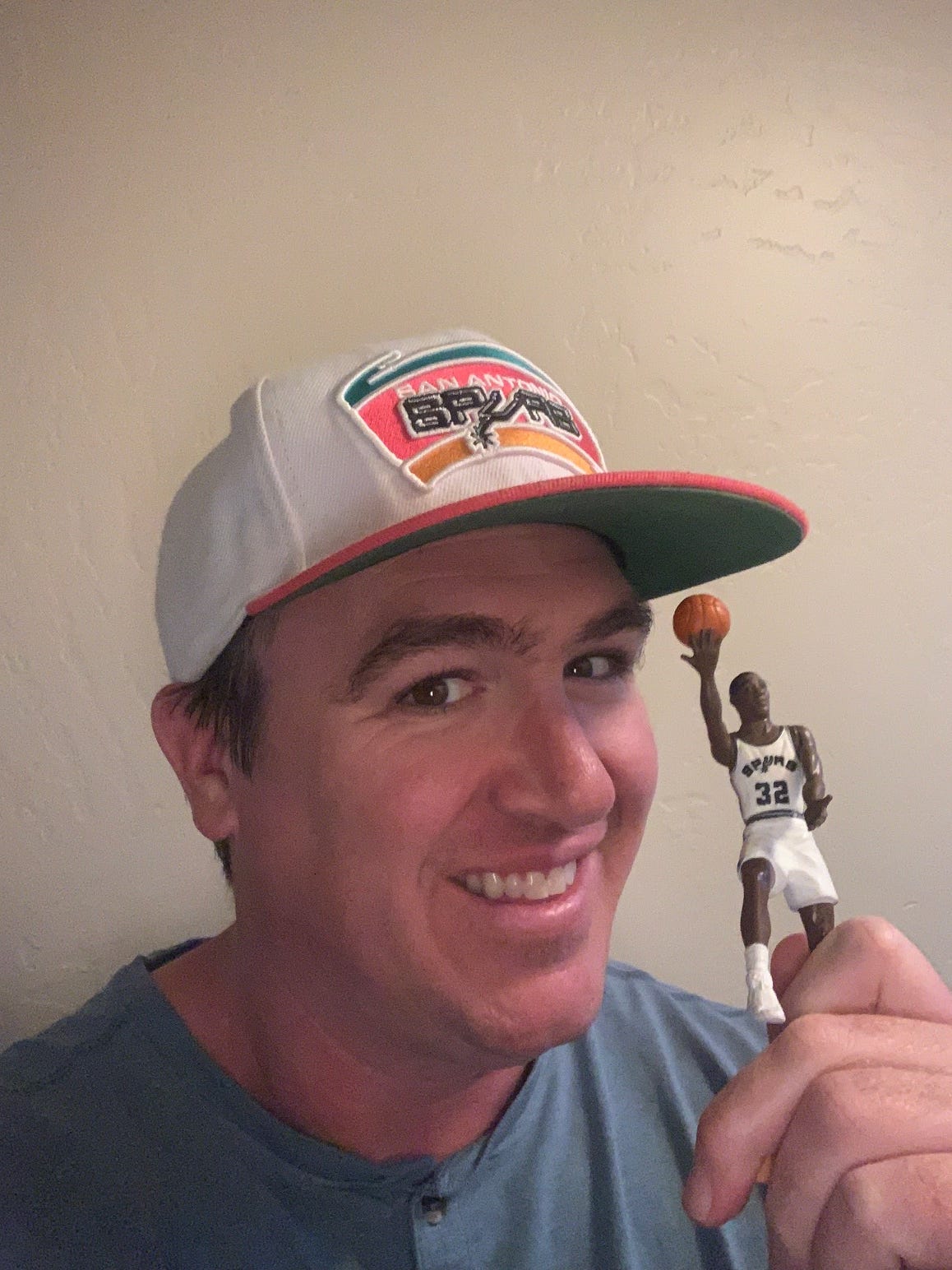Victor Wembanyama and the San Antonio Spurs, Written in the Stars
“Draft media is Astrology For Bros.”
I wish I could recall where exactly I read or heard the above quote, because it quite ingenuously summarizes the cottage industry within sports media. Projecting how young prospects will transition to the professional ranks isn’t an entirely inexact science — certainly, there are qualities more likely to translate to a sport’s highest level.
But so many factors determine a pro athlete’s success beyond those apparent when watching that athlete against competition at another, ostensibly lower level, projecting their future requires a ton of guesswork.
It’s like Matthew McConaughey offers as advice to Leonardo DiCaprio’s Jordan Belfort in The Wolf of Wall Street: “I don’t care if you’re Warren Buffett or Jimmy Buffett, nobody knows if a stock is gonna go up, down or in fuckin’ circles.”
The sentiment applies to analysis of sports-league drafts. Much like those on TV or online who peddle advice in sports betting — an industry in which the true winners typically operate in anonymity without sharing their process publicly — anyone telling you with certainty about a draft prospect isn’t really that in the know.
If they were, they’d be in a front office — and even then, with all the tools at their disposal, the professionals’ projections for draft prospects go bust more often than they pan out.
Don’t confuse my cynicism toward draft media with the misguided belief I could do any better. Having believed Marcus Fizer would take up the mantle from Karl Malone as basketball’s next great power forward, or that Darren Collison would find more NBA success than UCLA backcourt mate Russell Westbrook, or that Portland made the right decision taking Greg Oden No. 1 overall ahead of Kevin Durant1, I have become a staunch Draft Agnostic.
It’s with this principle in mind that I have viewed Victor Wembanyama’s pre-2023 NBA draft buzz with indifference — and some annoyance. The 7-foot-3 French prospect became the poster child for the cottage-within-a-cottage industry of over-hyping players for social-media clout with short clips lacking any context.
If draft media is inexact science, TikTok and IG scouting are straight-up junk science.
It’s also with this principle in mind that I, as a longtime Spurs fan, welcome Wembanyama’s inevitable selection to San Antonio as the No. 1 overall pick with cautious optimism.
As a Serious Sports Journalist, I try not to disclose my fandom. I find the present-day trend of prominent media reveling in outright homerism gauche, if not unprofessional in some instances.
But at the same time, I probably wouldn’t have followed the path that led me to sports journalism if it weren’t for my dad sharing his love of basketball with me from a young age. That included him as a San Antonio native telling me stories of seeing “The Iceman” George Gervin uncoil dazzling finger-rolls during the Spurs’ days in the American Basketball Association.
Seeds of Spurs fandom were planted. The soil was watered with rosters in my very earliest days watching basketball that featured Sean Elliott — who, when I was five years old, I marched up to on the campus of the University of Arizona and requested a handshake — and David Robinson, one of the most likable superstars in basketball history.
Robinson was the first of two No. 1 picks that proved transformative for the organization: Tim Duncan’s selection in 1997 ushered in a dynastic era that produced championships across three separate decades.
I associate very milestones in life with Spurs championship runs. My family moved into a new house over the holiday weekend in May 1999 when Elliott hit the Memorial Day Miracle.
I watched the nerve-racking Game 7 of the 2005 Finals at BJ’s Brewhouse in Tucson with my then-girlfriend, now wife. And in 2014 when San Antonio won the last of its five titles in Duncan’s tenure, I held my first-born child — then three weeks old — while watching the clinching game against the Miami Heat.
A constant for each of those title was, of course, the No. 1 draft pick Tim Duncan. Another constant through four of the five was Tony Parker.
There’s a nice symmetry in San Antonio having the draft’s top choice in a year that the clear selection hails from France, and it coming on the 20-year anniversary of the French import Parker playing a role in what is, to me, the best of the five Spurs titles.
The 2003 championship was San Antonio’s first in a full season, with the ‘99 Finals capping the lockout-shortened, 50-game campaign. Beating the Lakers on the way ended the Kobe/Shaq dynasty, solidified Duncan’s second Most Valuable Player Award, and proved emphatically that the Spurs were no fluke as a championship organization.
San Antonio’s first banner-carrying, No. 1 pick, David Robinson, announced his retirement after the 2003 Finals. It signaled the successful end for one era of a team that was part of my formative years, and the transition into another. That ‘03 roster was the first that really showcased the international scouting that defined the Spurs for the following decade.
And it all comes full circle two decades later. One might say it’s cosmic — almost like astrology for a basketball bro.
I can — and in a forthcoming edition of The Press Break, will — explain my rationale behind the most egregious NBA draft whiffs to my name.





